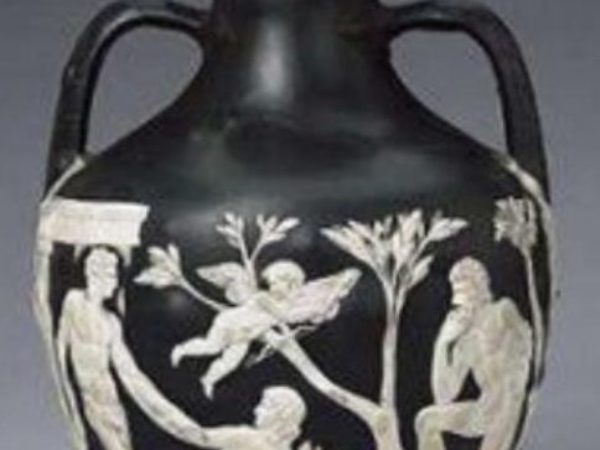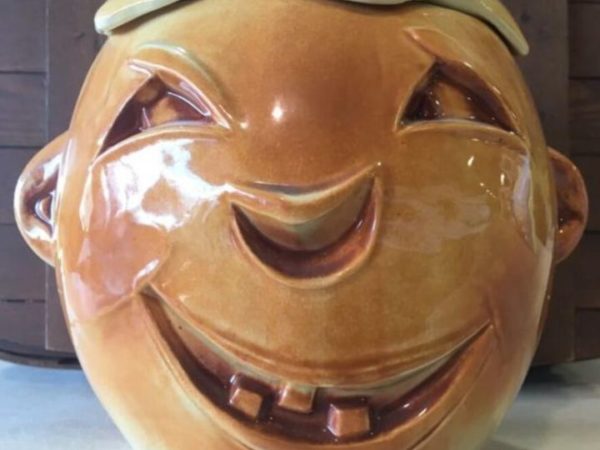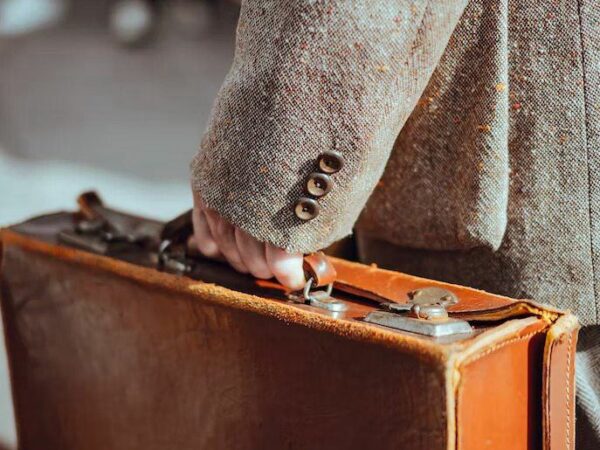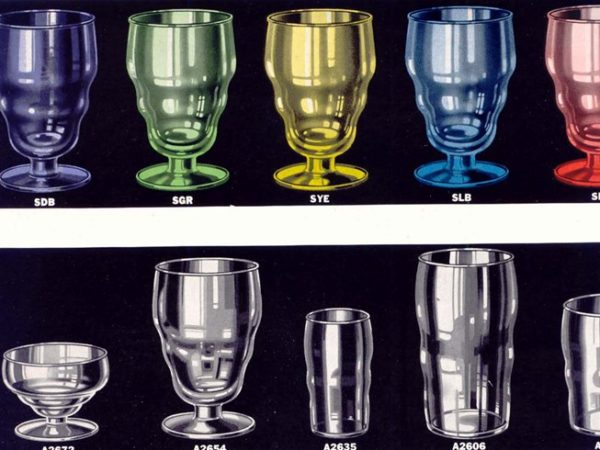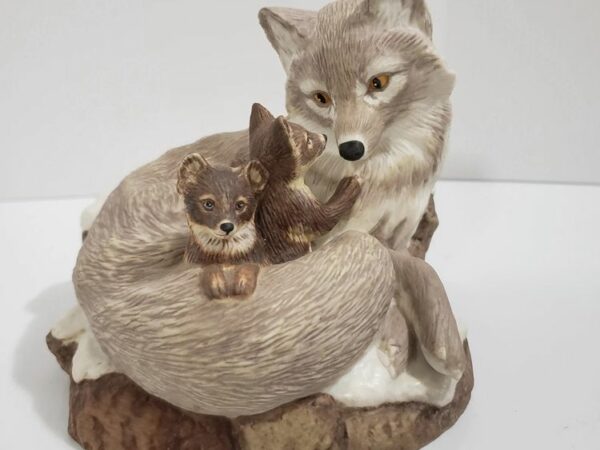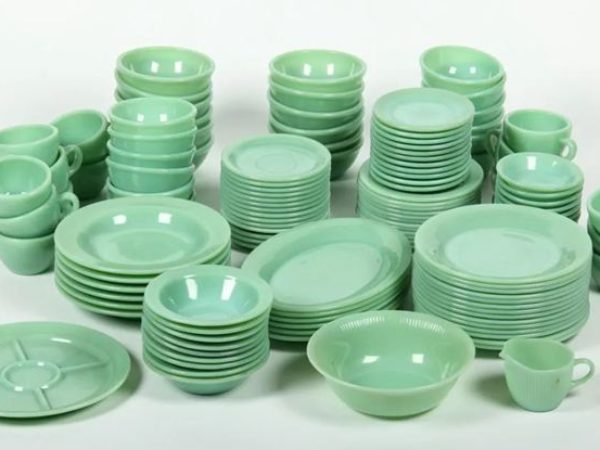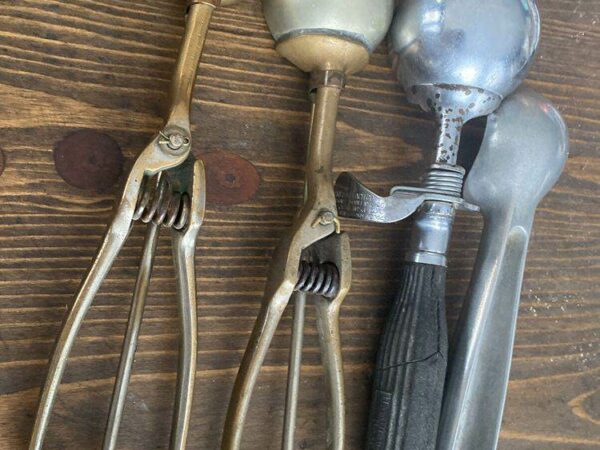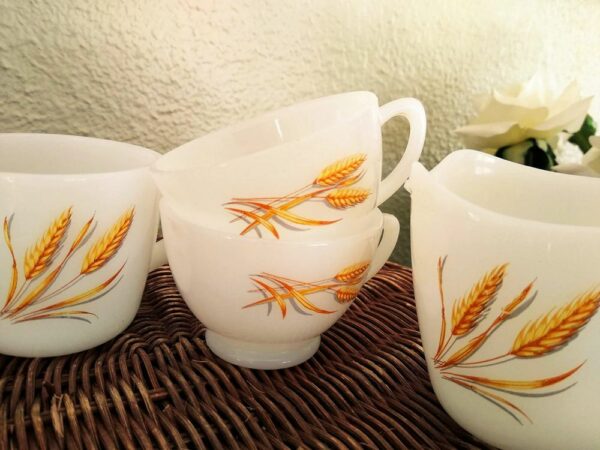Collecting antique glass bottles is a hobby for many people as they are beautiful and collectible pieces. The only problem involved in the process is how to identify the bottom markings on the bottle.
Most antique glass bottles come with their unique bottom markings, which make it easy to identify them. Manufacturers during the past century have been using different combinations and symbols to differentiate one batch from another. These markings also help you to know if the bottle was made by one company or another.
Knowing how to identify antique glass bottles is essential when collecting them. This is because some collectors will not buy any bottle without knowing what kind of bottling it has. This guide will teach you how to identify the bottom markings of an antique glass bottle.
Table of Contents
The History of the Bottom Markings of Glass Bottles
The bottoms of glass bottles often contain markings that help identify when and where they were manufactured. The most common example is Pb, which stands for plateau blanc, a type of French soda popular in late 19th-century America. However, those looking for antiques might be interested in learning more about other bottle-bottom manufacturers.
An 1871 report from Canada claims that one-half of all bottles made in Birmingham (England) have on their bottoms:
- Letters and figures indicating their size
- Letters indicating their location
- Figures indicating the date of manufacture
There are also references to distinctive markings being used as early as 1792.
Classification of the Bottom Markings of Glass Bottles
If you are wondering about the bottom markings of glass bottles and their importance, then wonder no more. However, you should be aware that these meanings may vary from one type of bottle to another.
If you are in doubt, look for marks on the side too; most bottles have at least two lines. This classification scheme only applies to clear glass bottles with ground bottoms, like wine and liquor bottles. So if your bottle has a pontil mark or groove on the bottom, it does not apply.
Colored Glass Bottles
Glass bottles that have been painted or tinted can be pretty challenging to determine their original bottoms. To begin with, you’ll need a glass bottle cutter. This tool looks like an oversized pair of scissors and is specifically used to cut and shape glass bottles.
Once you have your tool, find a ruler or tape measure with millimeter markings. Measure across two points on the bottle’s bottom and record those measurements for later use.
Now you will notice that all colored glass has frosting around its edges. It’s caused by the buildup of paint after many layers have been applied. This makes it difficult for light to shine through when examined under sunlight.
Embossed Glass Bottles
These bottles usually have a raised image or logo, with lettering often on one side. On a Coca-Cola bottle, you’ll see an R followed by a number; that number is what identifies each bottling location.
Unlike some bottling marks (like paper labels), embossed glass bottle markings won’t wear off over time. So identifying the bottling location isn’t as difficult as it could be.
The only time embossed glass bottles can be tricky is when there are multiple overlapping designations within one bottom marking. Sometimes raised letters, and numbers indicating where it was made and when it was packed can also make things tricky.
Identification of the Bottom Markings of Glass Bottles
By reading the bottom markings. Most glass bottles will have two types of markings: embossed and stamped. The embossed design has special meanings that tell us something about the bottle and its contents. Sometimes, however, it’s hard to read them.
The stamped marking gives specific information about when and where it was made, but we also need some decoding skills. It’s also worth noting that there are no set rules for these markings.
Hence, each company uses its symbols for identification purposes. So be sure to do your research if you’re buying vintage glass bottles on sites like eBay or Etsy!
Mold Lines
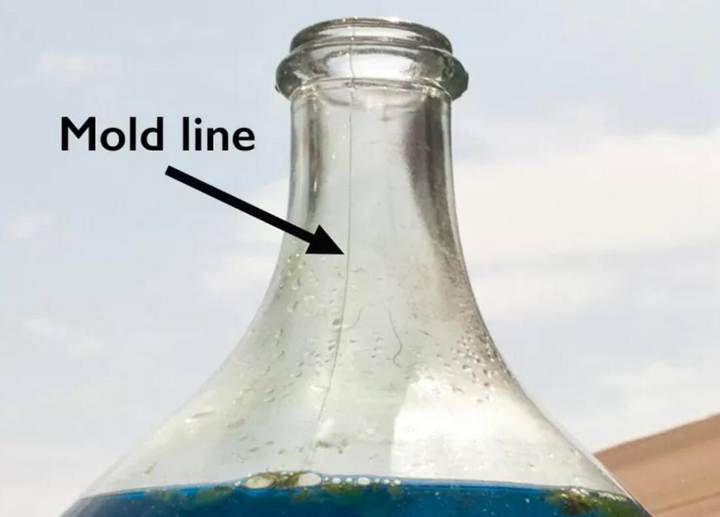
A mold line is a line or marking left on glass bottles after being blown into a mold. Mold lines run along where two pieces of glass meet. They allow you to determine whether your bottle was hand-blown or made in a machine.
During manufacturing, whether by hand or machine, glass is forced into a mold with high pressure and then cooled quickly. This creates tension that leaves behind grooves known as mold lines when it cools.
Since molds are imperfect, each bottle will have its unique set of lines essentially embedded in them like fingerprints. Due to their small size, you’ll need to use your magnifying glass to inspect them closely.
Embossed Marks
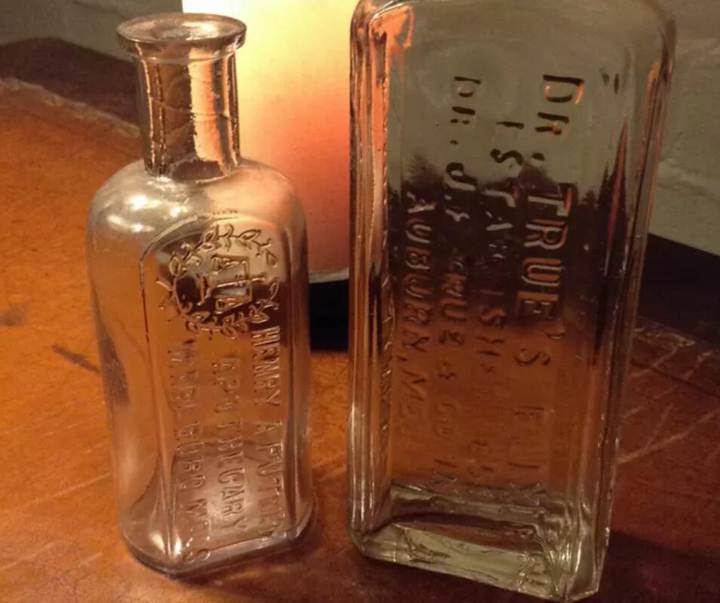
These are used on beer and liquor bottles. Embossed markings on the glass will tell you what type of bottle it is.
Embossed marks are also helpful if you run across an old bottle in your collection. It’s a good idea to keep a bottle bottom identification guide close when hunting for bottles at an antique shop. That’s because different mark types can help date bottles.
Pontil Marks
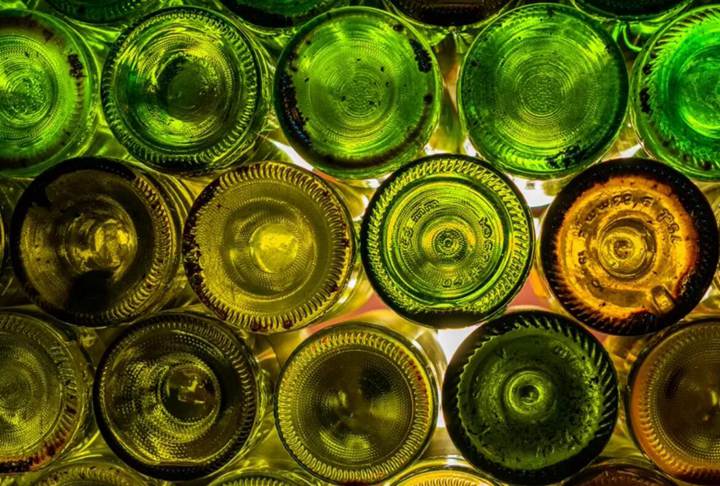
The word “pontil” derives from an Italian word for a pin or nail used to form a seal on glass. When you see a mark that looks like an arrowhead, it is called a pontil mark. It indicates where one side of a bottle was attached by heated metal tongs that left impressions in the glass.
The pontil rod was heated up and taken out of its cradle. After which, it is driven into the blob at one end of a bottle, leaving an impression on both sides.
This process is called “working while hot” and requires great skill by the glass blower. That’s because they cannot touch or hold onto any part of their work while performing this task.
Mold Seams
There are times when a bottle has mold seams. This means that, at some point, it was blown into a mold and allowed to cool inside it.
If you find bottles with these marks in your collection, they’re likely older than bottles without them. Mold seams are usually very pronounced and easy to spot because many glassmakers have their patterns.
They can be almost triangular or arched in appearance. You may also see a series of small dots or lines. This is where bubbles were trapped during manufacture.
These types of markings aren’t exclusive to bottles made in molds. Mouth-blown bottles may have similar lines if they were cooled quickly after being removed from an annealing oven. You should take note that mouth-blown and molded bottles can have identical markings.
Maker’s Marks
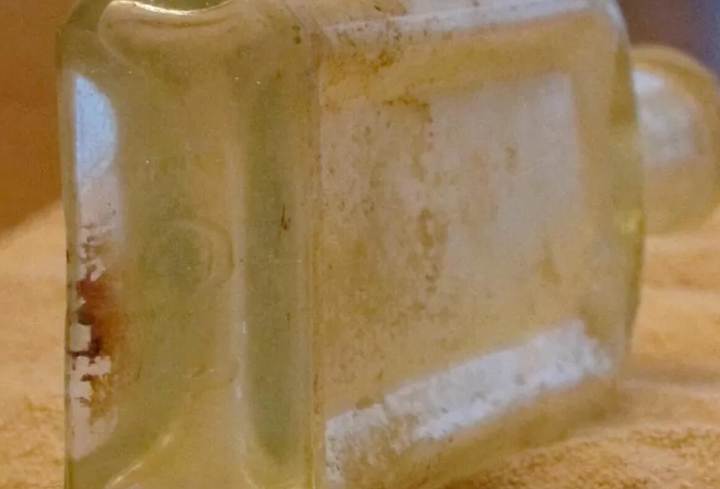
Several marks will help you identify glass bottles, but the first step should be learning to identify a glass maker’s mark. For example, New England Glass Co. is well known for its NEG Co logo.
The bottles they produce will include an embossed glass makers’ mark in addition to a copyright symbol at the bottom. It’s easy to remember; just think NEG!
If you’re familiar with these marks, it can cut down on your research time. Luckily, most bottles were produced in only a few decades. So if your bottle was made before the 1870s, you probably don’t need to worry about who made it.
Recognition of the Bottom Markings of Glass Bottles
The bottom markings for these containers are white or yellow-and-black diamonds. They’re formed in a grid pattern with four lines radiating from one point in each corner.
These lines don’t cross, and there is one space between each line and the point on each diamond’s side. The only exception is the fourth line, which is joined at its midpoint by a horizontal bar through its center. This is a simple way to recognize the bottom markings of glass bottles based on their anatomy.
Heel
(on bottom) This marking is found on narrow-necked bottles, indicating that a heel was used in manufacture. A large letter H (for heel) will be printed on one side of the bottle. An inverted T (for the tool) will be found on the other.
The more minor marks might not even appear if you’re using plain old window glass or regular clear glass. You’ll have to use high-quality flint glass.
To read these markings, rotate your bottle until you see two straight lines running from one side toward another. Make sure you look at bottles from different angles since some heel markings are visible only from certain viewpoints.
Pushup
Businesses have several different methods they can use to measure success. One popular approach is called “measuring what’s on top.” This strategy looks at customer acquisition and conversion rates to determine which marketing channels drive results.
However, companies also need a baseline metric that tracks overall performance, even when things aren’t going according to plan. This type of measurement is known as KPI: Key Performance Indicator. This is a metric that helps you make decisions based on company goals and requirements.
The bottom markings on glass bottles are often used as a KPI. That’s because they provide insight into whether or not your products were exposed to hot temperatures over time. If bottom markings can be read, then it means there was no exposure.
Base
The base is usually thick and, due to its larger size, is usually attached to an indentation on one side. Usually, bottles have round bases, but they can also be diamond-shaped (Florence flasks) or oval-shaped (commonly called Liverpool bottles).
The base is fundamental in identifying a bottle. You can often tell if a bottle has been turned over by looking at its base.
if it’s not natural but was cut into shape, it will be flat on top. Air will also be visible under it when placed upright. This helps determine if a bottle has been turned over before.
The Value of the Bottom Markings of Glass Bottles
If you have a collection of bottles and want to know if they are made in the USA, UK, or Europe and how much they are worth. The bottom of each glass bottle has a small number like 5124 that tells us where it was made. This is known as the bottom markings number.
There were two major countries where glass bottles were made: England and America. So learning how to identify marks on the bottom can tell you where your bottle was made. It can also show which country it comes from, and what year it was produced.
In the end, all this information will even make your bottle more valuable! Below is some information about some of the most expensive antique bottles that were ever sold:
Four Bottles of Blob Top Weiss Beer
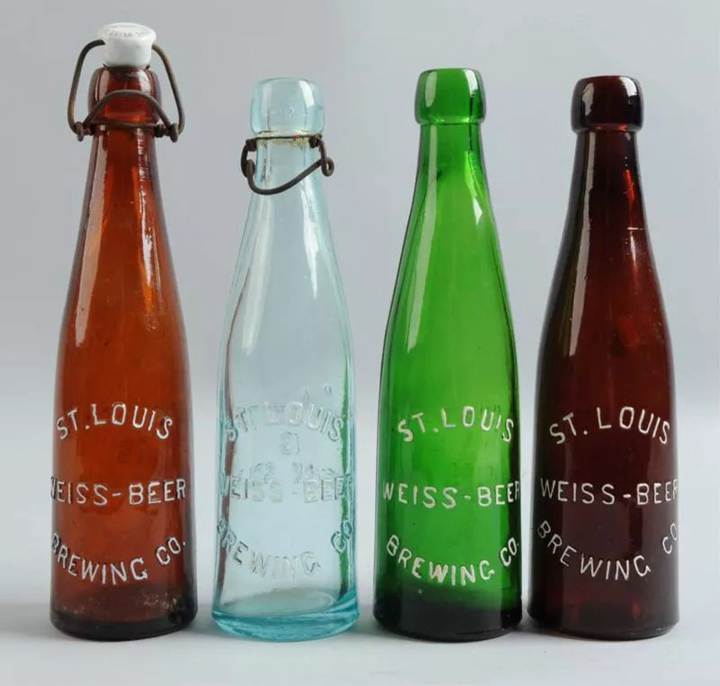
These four bottles are of different colors, with one of them still retaining a Weiss enclosure. They are characterized by the design at the top of the bottles, which is known as a ‘blop top’. They all got sold for $180.
3 Labeled Bottles of Lemp Beer
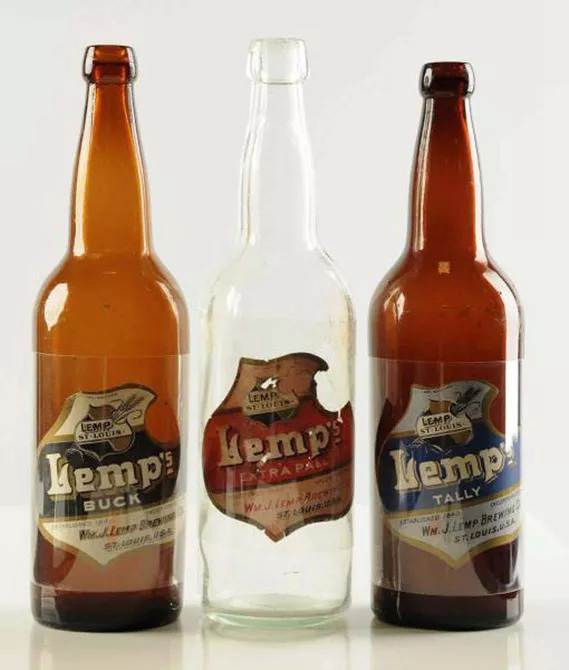
These 3, 12-inch bottles of Lemp beer come with their labels. Although their labels aren’t in mint condition, they’re still legible, and it reads, ‘Lemp Buck’, ‘Lemp Extra Pale’, and ‘Lemp Tally’. These 3 bottles got sold for $300.
The Dr. J. Cornwall Beer Bottle
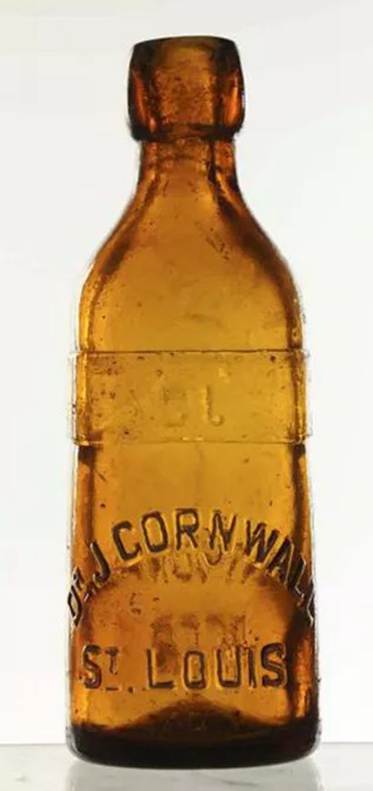
Collectors value this bottle highly because it contains the name of its brewery-Dr. J. Cornwall Brewing Company. It also offers the location of the brewery, which is in St Louis, Missouri. This bottle has a little chipping at the top, along with natural air bubbles; it got sold for $420.
National Bridge White Beer Bottles
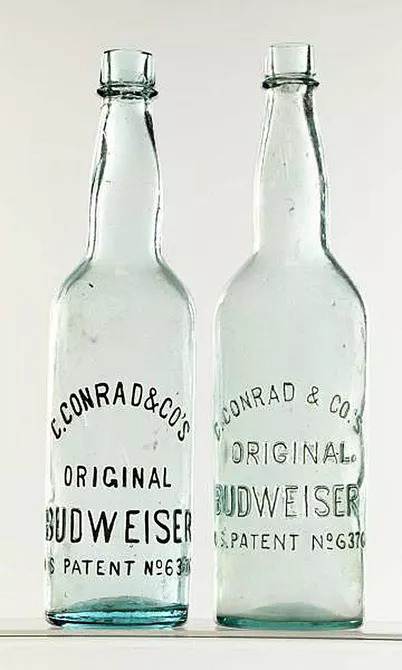
The design of the bottle top is very rare, while the bottles themselves have no cracks or chips. They were both sold for $2700 because of their value.
Where to Buy the Bottom Markings of Glass Bottles
To ensure you’re buying authentic, high-quality bottoms of glass bottles, you must buy from a licensed and certified vendor. Never shop online unless you know and trust your seller. Please do some research by reading reviews, checking their license information, etc.
Once you’ve verified that they are legitimate, search for products that interest you – and order! To get started quickly, try an auction website like eBay.
You can also do a general search on Google for ” bottoms of glass bottles or bottom markings for bottles.” Your results will be immediate and easy to identify.
Conclusion
Today I went over a quick overview of identifying typical markings on glass bottles. I explained how mold numbers help identify when and where a bottle was made, and whether it is an original piece. The mold numbers will show what type of bottle it is and if it’s indeed a piece of antique glass.
